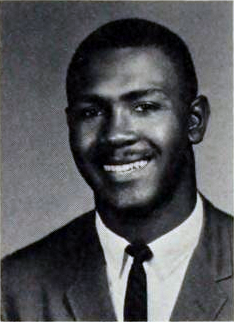
TRAILBLAZERS
Learn more about some of the trailblazers who worked tirelessly to pave the way for Black South Carolina residents.
-
![]()
Benjamin Keese (Sept. 27, 1881 – April 3, 1975)
Benjamin Horace Keese, a Pendleton native, transformed the town’s social scene for its African American residents. He opened a general store in the early 1900s that would later transform into a public restaurant, antique store, auction house, and residence, all in one. “The Old Keese Barn” and its public gathering place, known as “The Hundreds,” changed daily life for Black Pendleton residents, who had no other destinations where they could publicly gather, celebrate, and enjoy each other’s company. Keese’s enterprise provided a haven and a safe space for the town’s African American population during the worst times of Jim Crow and segregation. He was also known around town for his willingness to give and help, leading church services, acting as an informal banker when Black folks were turned away from financial institutions, and helping procure land for the Pendleton Community Center. After Keese died at the incredible age of 94, the structure fell into disrepair and was ultimately dismantled by Clemson University students in 2003 to create a memorial to Keese and his dream. Learn more about the Keese Barn Legacy Project and how you can help us restore this key part of local history.
-
![Annie Morse]()
Annie Morse (1917 – April 15, 2012)
Annie Ruth Webb Morse was the niece of Benjamin Keese, and as a teacher and public servant, she worked tirelessly to preserve Pendleton’s Black history for generations to come. Morse retired from a lengthy teaching career in 1976 and realized that Pendleton’s existing archives did not fully reflect or preserve the contributions of the town’s African American population. She founded our organization – the Pendleton Foundation for Black History & Culture – to set this omission to rights, primarily through restoring her uncle’s “Old Keese Barn” property. Until her death in 2012, Morse’s indomitable spirit came across in countless fundraising and publicity campaigns to save the property. Though she found scattered success and created many new initiatives, such as “Souvenir Bulletins” that commemorated local Black families, her dream of preserving the barn was not realized during her lifetime. Inspired by her vision, we continue to fundraise to resurrect the Keese Barn Façade. Learn more about the Keese Barn Legacy Project and how you can help us restore this key part of local history.
-
![Joseph Rainey]()
Joseph Rainey (June 21, 1832 – Aug. 1, 1887)
Born in Georgetown, in South Carolina’s Lowcountry, Joseph Rainey would become just the second Black person to serve in the United States Congress. Born a slave, Rainey’s father was able to purchase his freedom along with that of his wife and sons in 1840, and Joseph soon followed his father into his profession as a barber. After the Civil War, Rainey and his own family moved to Charleston, where he declared as a Republican and began his political career. In 1870, he earned a seat in Congress in a special election and served four terms – the longest-serving Black Congressman until the 1950s. Sadly, Rainey’s later terms in office were overshadowed by overt racism against Black Americans and armed attacks by paramilitary groups around South Carolina. Rainey had successfully worked to promote and pass the Civil Rights Act of 1875, but by the time he left office in 1879 the seeds of Jim Crow laws and political disenfranchisement of African Americans had already been planted.
-
![Harvey Gantt]()
Harvey Gantt (born Jan. 14, 1943)
Harvey Gantt was the first African American student admitted to Clemson University, officially ending the school’s nearly 75 years of segregation. Gantt, who had a strong interest in architecture, attempted to apply at Clemson due to its strong architectural programs; instead, not only was he not admitted as a Black student, but the South Carolina Regional Education Board even paid the difference for him to attend an integrated, out-of-state school, Iowa State University. However, Gantt was determined to attend Clemson, meeting with the registrar in person, continually sending application materials, and eventually taking legal action against the school. The courts ruled in Gantt’s favor and allowed him to begin at Clemson in the spring semester of 1963. In September of that year, Lucinda Brawley became the second Black student admitted; she and Gantt would marry in 1964. Later, Gantt would become a multi-term mayor of Charlotte, NC, and in 1988 Clemson launched the Harvey B. Gantt Scholarship Endowment to support other Black students who dream of being Tigers.
-
![Juanita Goggins]()
Juanita Goggins (May 11, 1934 – c. Feb. 20, 2010)
One of ten children born to sharecroppers in Pendleton, Juanita Goggins would become the first African American woman elected to the South Carolina state legislature. Bright and dedicated from the start, Goggins was the only one of her siblings to earn a four-year college degree, later earning a master’s degree as well. Goggins became a teacher in Rock Hill, SC, and through this role became involved in the civil rights movement and a new career in politics. In 1972, she was elected as a delegate to the Democratic National Convention, where she was the first Black woman to represent South Carolina. In 1974, she was elected to the first of three terms in the state House of Representatives, where she would ultimately pass lasting legislation funding sickle-cell anemia research and treatment, as well as kindergarten and primary education.





